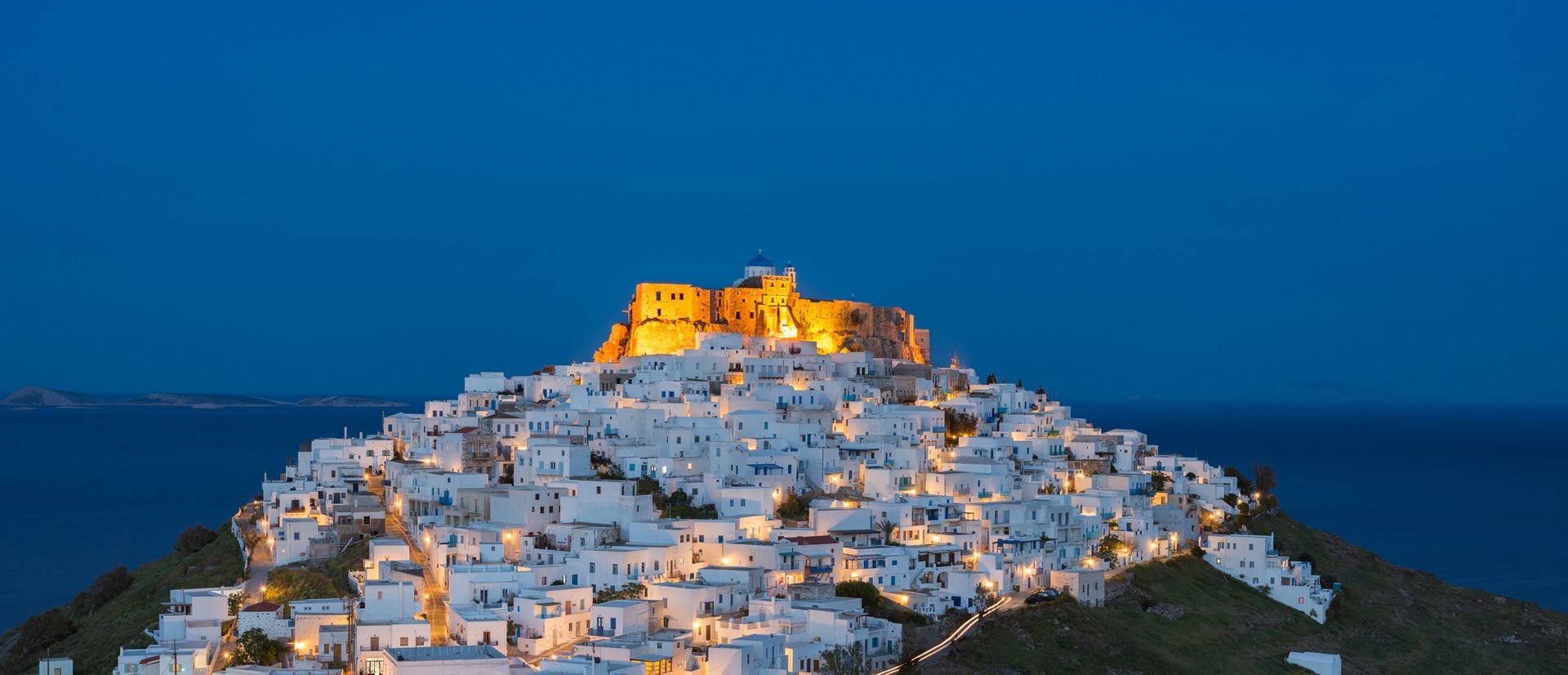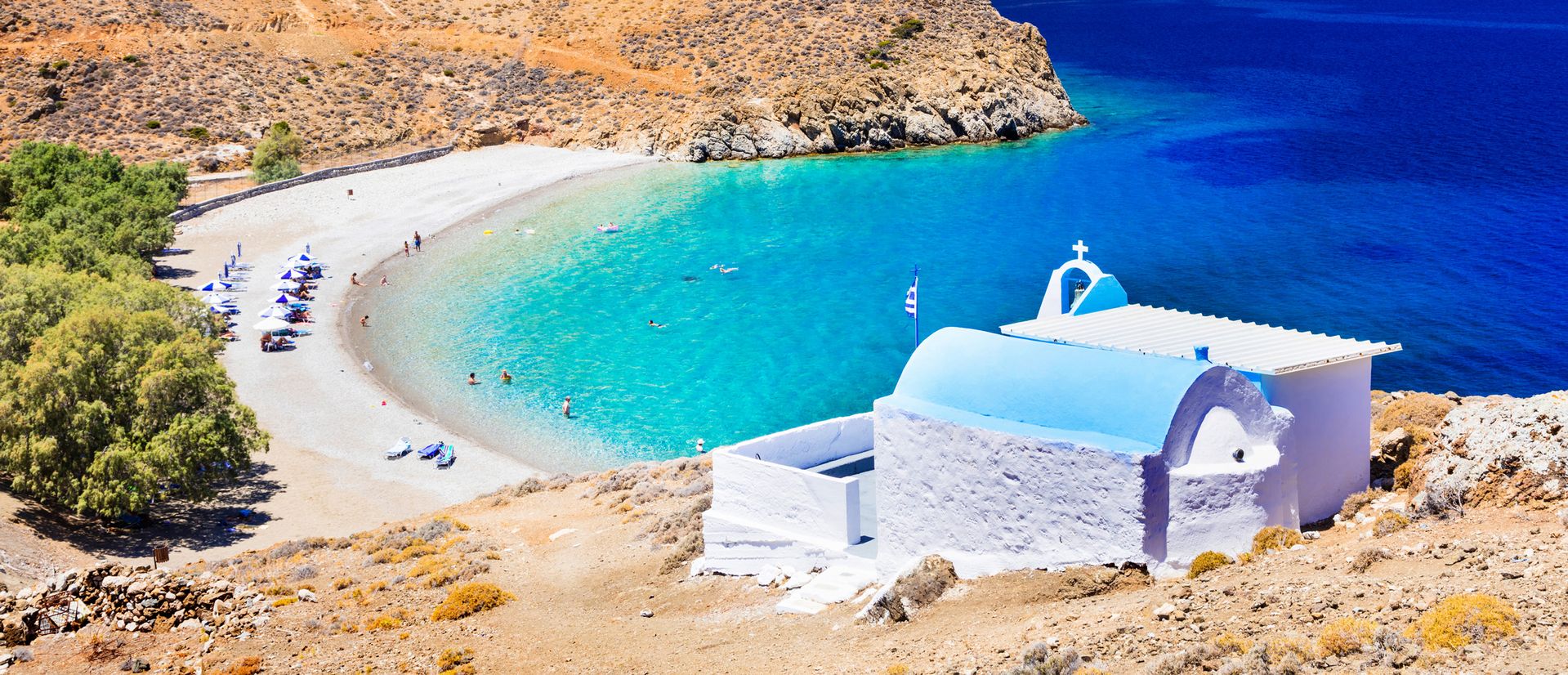Hanging between Cyclades and the Dodecanese, Astypalea is the connecting link between those two. Although its administration belongs to the Dodecanese, its Cycladic elements and its wild beauty, leaves even the most demanding visitor breathless.
The hospitable residents, the Castle, blue beaches, picturesque alleys decorated with flowers and the traditional tavernas are some of the many good reasons to visit Astypalea!
A touch of Mythology
Astypalea was a Nymph and sister of Europe, daughter of Finikas, son of Aginoras and Perimidi. In the following years she appears as wife of Poseidon, with whom she gave birth to Argonautis, king of Leleges in Samos, Agkeos and the king of Kos, Eurypilus.
Walk in the scenic alleys and the square
Live all the magic of the island by walking in the picturesque alleys and whitewashed houses. When you reach the central square you will be amazed by the image of the eight traditional windmills. The view from this point is breathtaking. Crystal clear and blue waters make you want to swim in them and visit even the steepest beaches. The amazing beaches and the harmony of the natural environment guarantee a unique and unforgettable experience.
Sunset at the Castle of Astypalea
The Venetian castle of Querini built on the ruins of the Ancient Acropolis, placed royally on the top of the hill, surrounded by the current settlement of the island. Here you can admire the best sunset of the island with a view to Astypalea and the surrounding islands. You will keep enjoying the castle’s view throughout the day, as its incomparable beauty is evident from any location. It is the only castle of the Dodecanese that in the interior surface of its walls there are houses built. Between the walls, the blue dome of Panagia tou Kastrou emerges and from the other side the church of Agios Georgios.
Small churches are scattered on the settlement. The most important of all is Panagia I Portaitissa. Built in 1762, all in white, with impressive bell tower and silver dome. It is located on the castle’s feet and is one of the most beautiful churches of the Aegean, as it combines elements of island church architecture with neoclassical influences.
Archaeological Museum of Astypalea
The Archaeological Museum of Astypalea is located in Pera Gialos. The museum’s exhibition includes findings from the pre-historic era up to the medieval years, such as clay vessels, jewels, silver coins etc. It also exhibits marble fore tops, capitals, and other parts from old Christian basilicas and the marble coat of arms of the Querini family, from the Venetial castle of Chora.
The Ancient infant cemetery
The only infant cemetery in the world is found in Astypalea. Up to this date, excavations have found infant burials in clay vessels dated back at the 8th century b.C. This specific burial is named pot burial, deriving from the word pot and symbolizes the mother’s uterus. It is considered the most usual burial mode of newborns or young babies in ancient times.
The caves of Astypalea
The island has three caves of incomparable beauty.
- The cave of Negrou in Vatses: it has unique stalactites and stalagmites. According to the tradition, it is connected with myths of pirates and hidden treasures. The easiest way to get there is by boat from Chora.
- The cave of Drakos in Vathy: it has impressive stalactites and stalagmites. It seems to be connected with ancient worshipping doctrines, as deity figures and objects made of earthenware were found inside. You can reach the cave by boat or hiking (about 2 hours)
- The cave of Panagia Poulariani in Analipsi: located on the north part of the island, at the highest mountain, Kastellano. The Virgin Mary with Christ in arms said to form the rock of the church.
Climbing in “Ftera” field
Astypalea is an island hiding many surprises and for those who seek a little bit of adventure at their holidays, there is a climbing field in “Ftera” mountain, just 20 minutes away from Chora. The specific relief of the calcareous rock creates two different stages and 20 routes with different difficulty rank each.
Beaches
- Plakes: a small bay with crystal clear waters and pebbles. The beach is not organized and is only accessible on foot through a small path.
- Tzanaki: one of the most beautiful beaches of Astypalea, with the best view in Chora and the Venetial Castle. It is accessible through a path. It has pebbles and deep crystal waters, while rocks offer shade. Nudists visit also this beach.
- Mple Limanaki: one of the smallest beaches of the island. It is not organized and is accessible by an easy unmade road. It is a closed bay, at a short distance from the settlement of Maltezana. We suggest visiting it early, as it is popular and very busy due to its size.
- Steno: organized beach with blue shallow waters, ideal for families. It has sunbeds, tamarisks offering shade, as well as a cantine. Easy accessible.
- Vatses: beautiful beach with pebbles at it biggest part, as well as sand at its beginning. There are some umbrellas as well as some tamarisks for shade. The beach has a beach bar and is accessible through an unmade road.
- Kaminakia: one of the most famous beaches of Astypalea. It is windless, big, with sand and crystal clear relatively deep waters. It has tavernas, sunbeds and tamarisks.
- Pera Gialos: the beach with the easiest access on the island, as it is located at the old central port. It has umbrellas and tamarisks offering shade. Next to it you will find many tavernas, cafes and shops.
- Agios Ioannis: Accessible either by boat or on foot through the church of Agios Ioannis, which predominates on the mountain above the beach.
- Panormos: beach with wild beauty, layered with pebbles and without shade. It is protected on a gulf, windless and accessible through a relatively rugged unmade road.
- Agios Konstantinos: beautiful beach with view to Chora and the castle of Astypalea. Pebbles, deep waters, tamarisks as well as sunbeds. You will find also a taverna and a beach bar.
Local products & delicacies
- Pougkia with chlori (dough pouches with cheese, baked in the oven)
- Lampriano (stuffed baked kid)
- Rantista (local dish with lentils)
- Makarounes
- Saffron from Astypalea
- Honey from Astypalea
- Ladotyri
- Xerotigana (dessert with dough and local honey)
- Chloro (cheese)
- Kitrinokouloura

